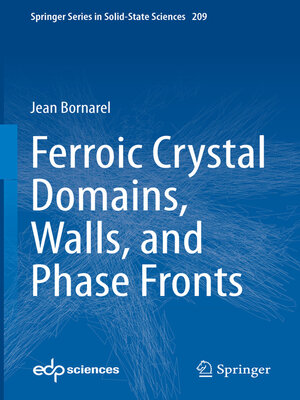Ferroic Crystal Domains, Walls, and Phase Fronts
ebook ∣ Springer Series in Solid-State Sciences
By Jean Bornarel

Sign up to save your library
With an OverDrive account, you can save your favorite libraries for at-a-glance information about availability. Find out more about OverDrive accounts.
Find this title in Libby, the library reading app by OverDrive.



Search for a digital library with this title
Title found at these libraries:
| Library Name | Distance |
|---|---|
| Loading... |
This book explores ferroic crystals, focusing on the intricate relationship between their macroscopic properties and microscopic phenomena. Ferroic materials, characterized by hysteresis cycles that link magnetization, polarization, and deformation to their respective fields, are pivotal in understanding and advancing various technological applications.
For the first time, this volume presents experimental evidence directly linking macroscopic responses to microscopic interface phenomena—domains, domain walls, and phase fronts—offering unprecedented clarity into the inner workings of ferroic systems. Simultaneous observations of domains, susceptibility measurements, and gamma diffractometry reveal how these microscopic structures govern the shape and coercive fields of hysteresis cycles, especially at first-order phase transitions.
The book bridges the gap between macroscopic measurements and nanoscopic insights, highlighting how domain interactions influence susceptibility through both short- and long-range effects, including freezing processes, isolated walls, and events occurring within the walls themselves. It further demonstrates how domain wall interactions—often overlooked in theoretical models—play a critical role in the reversal of ferroic order parameters.
Special attention is given to the interplay between ferroelasticity and ferroelectricity, delving into energy dynamics, phase transitions, and thermodynamic models. Notably, the manipulation of chemical, mechanical, and electrostatic energies in first-order transitions is shown to affect the shape of phase fronts, which may appear as planes, “factory roof” geometries, or even fractal patterns, and may include periodic inclusions of one phase in another.
With clear explanations, visual demonstrations, and practical experimental insights, the book caters to researchers and students aiming to deepen their understanding of these phenomena. Designed for both seasoned scientists and budding researchers, it integrates experimental data, simulation results, and theoretical models to provide a holistic understanding of ferroic crystals, their behaviors, and their applications in modern science and technology.







